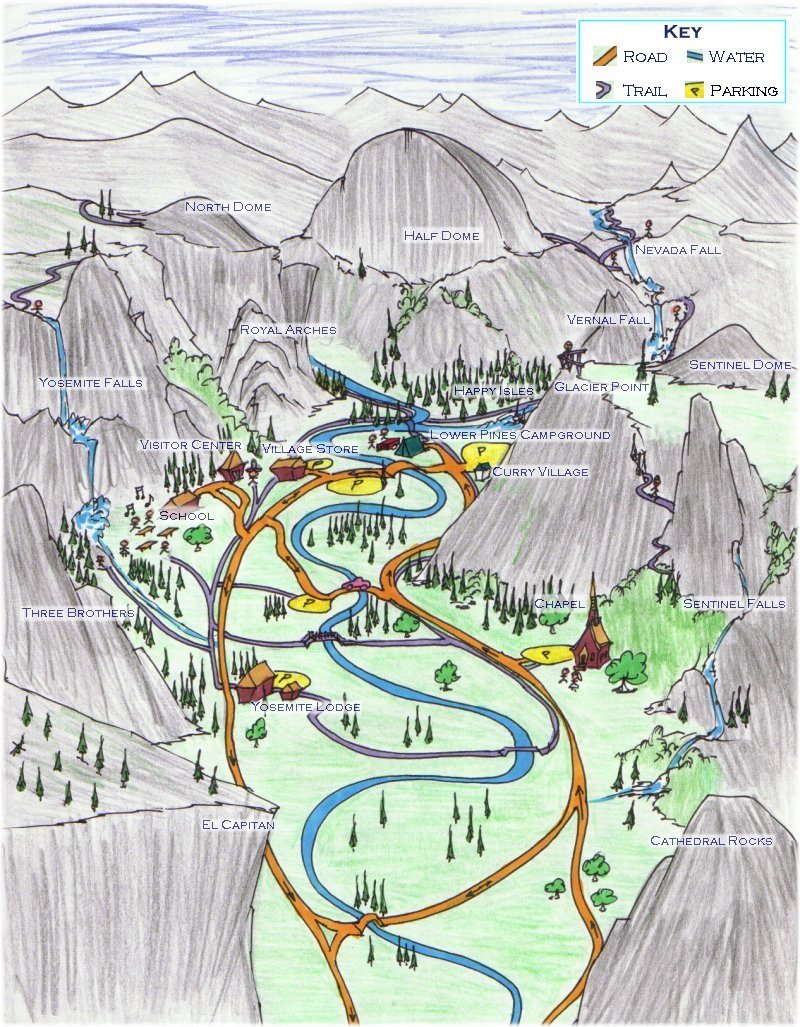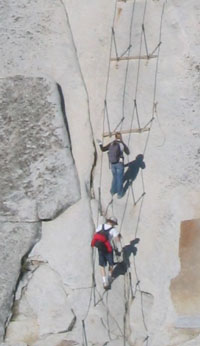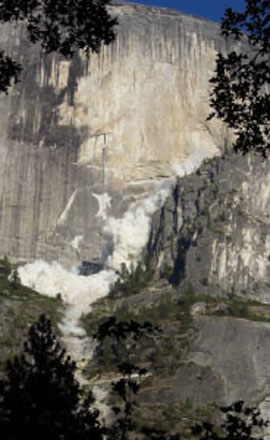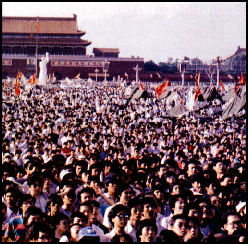The big news of the day are the deaths
first of Farrah Fawcett and then of Michael Jackson. I tried to think of some way I could contribute something new to the discussion. I looked for news of an occasion when they had both been together, but the internet is so full of stories about today, I didn't have any luck.
I thought of some things they had in common -- his hair literally caught on fire, her hairstyle caught fire figuratively in that it became hugely popular; he was tried for molestation, she portrayed someone who had been molested; they both hired a well-known Hollywood
wiretapping PI bad-ass named Anthony Pellicano. But all that is a bunch of fluff that avoids the shock and sense of loss that a lot of people are feeling over the deaths of these two pop culture icons.
The best I can offer you on these subjects is an entry I did way back in July 2005 about
Charlie's Angels.
When you're ready to move on to other topics, I have this one to offer you. It's about a certain type of pine tree I was introduced to during my trip to California.
My intrepid traveling companion/sherpa and I were driving away from
Yosemite, back down through the Sierra foothills and slowly wending our way toward civilization. We were talking about how huge the pine trees are around there, and how enormous their cones are. I mentioned that my mom has a basket of super-large pine cones at her house, but I didn't know what kind they were. He said there was one tree that made pine cones so large and heavy that when they fell, if one of them hit you on the head, it would be like getting hit by a missile. He thought that maybe these pine cones were like the ones my mom had.
When we stopped to eat at a little town called Mariposa, he decided to see if he could find any of these particular pine cones. So he went forging into the brush and unearthed from the tall grass not one, but two of them. Both of them had opened only about halfway. The top half of the cones were still closed up tight as a drum, hanging onto their seeds. They weren't like the kind my mom has, but they were pretty magnificent. And they were really heavy. I'm bad at gauging this sort of thing, but I'd say they weighed about two pounds, each.
 One of the two Digger or Gray pine cones. I took the photo next to a ruler so you could see that it's about six inches tall. The white stuff on the tips is sap.
One of the two Digger or Gray pine cones. I took the photo next to a ruler so you could see that it's about six inches tall. The white stuff on the tips is sap.
(Photo by your faithful Apple Lady)- These pine cones belong to the Digger or Gray pine tree.
- The reason these trees have two common names is because the first is now considered to be offensive. White settlers called the natives in the area "Diggers" because they dug for roots and seeds and other foods, and it was a pretty derogatory term. These native people also ate the seeds of this pine tree, so the tree was named after them, or after what the white people called them.
- Recently out of awareness of this racist etymology, people have begun calling the tree the Gray pine. But the switch in common names hasn't fully taken hold, and a lot of people still call it the Digger pine.
- Its scientific name is Pinus sabiniana, after a British attorney and famous naturalist named Sabine who studied the tree.
I packed the two pine cones in plastic bags in my suitcase and took them home with me. When I got home and opened my suitcase, I disocvered that TSA had opened my suitcase and inspected them. I can't imagine what they must have looked like on the security camera. I also discovered that the pine cones had opened the rest of the way at some point during the flight. I expected there to be pine cone seeds and dross all over everything, but I only found two seeds.
 Gives you another idea of the size of these things. This is the one that the seeds came out of. You can see the hollow places that held the seeds.
Gives you another idea of the size of these things. This is the one that the seeds came out of. You can see the hollow places that held the seeds.
(Photo by the Apple Lady)
- Cones can grow as large as 8 to 12 inches, though they're more often smaller. When they're still fresh off the tree, before they've dried out and lost their seeds, they can weigh anywhere from a half to one and a half pounds.
- The cones usually open in the fall, in September or October. But it can take several months before all the spines have opened and all the seeds have dispersed. Some cones have been found with seeds ready to fly as late as February.
- It usually takes 10 to 25 years before a digger/gray pine tree will produce cones.
- Here's some pine cone terminology:
- The things that hold the seeds are called cone scales.
- The spiky things at the pointed tips of the scales are spurs.
- If a cone has seeds enclosed, it's a female cone.
- If a cone has no seeds but only pollen, it's male. Male cones are usually smaller.
 The spurs on the digger/gray cone scales are very pointy and sharp. This is one of the distinctive features of the digger/gray cones. When I picked up one of the cones, a spur pricked my finger and drew blood. It hurt like I had a splinter in there for several days. That was over a week ago, and I still have a sore, dark mark on my finger.
The spurs on the digger/gray cone scales are very pointy and sharp. This is one of the distinctive features of the digger/gray cones. When I picked up one of the cones, a spur pricked my finger and drew blood. It hurt like I had a splinter in there for several days. That was over a week ago, and I still have a sore, dark mark on my finger.
(Photo by the Apple Lady)
- Unlike a lot of other pine trees, the cones don't necessarily fall from the tree before they open up and eject the seeds. In fact, even after the seeds have flown the coop so to speak, the cones may still hang around on the tree for quite a long time.
- In addition to the usual methods of cone seed dispersal -- wind, birds carrying them off, cones dropping to the ground and flinging them about -- digger pine cones are remarkably buoyant. Digger pine cones that had dropped into rivers and streams have been found as far away from their native lands as 25 miles, or within 8 miles of the ocean.
 Digger or gray pine cone seeds. I discovered these loose in the plastic bag after I unpacked the pine cones. The one on the right is still in its seed coat (anil, a word I learned from crossword puzzles). Everybody says that these seeds are edible, so after I took this picture, I tried to eat one of the seeds. It was so hard, it was like biting into a stone! I couldn't even make a dent. It left a resiny, piney tang in my mouth. (Photo by the Apple Lady)
Digger or gray pine cone seeds. I discovered these loose in the plastic bag after I unpacked the pine cones. The one on the right is still in its seed coat (anil, a word I learned from crossword puzzles). Everybody says that these seeds are edible, so after I took this picture, I tried to eat one of the seeds. It was so hard, it was like biting into a stone! I couldn't even make a dent. It left a resiny, piney tang in my mouth. (Photo by the Apple Lady)- Seeds generally grow to 3/4" to 1" long, and fresh out of the cone, they weigh about 1 gram (0.04 ounces). That might not seem very heavy, but compare that to other seeds you encounter more frequently, like sunflower seeds or sesame seeds.
- Men of the Sierra Miwok tribe used to climb the trees and pick the cones when they were still green. They'd roast the cones in hot ashes for 20 minutes, and the resin would come out, which was sweet. The heat made the cones open, so along with the sweet syrup, the Miwok ate the roasted, immature seeds.
 Gray pine is a name that suits these trees because the needles are gray. Sometimes they're also called Ghost Pines for the way the branches have an airy appearance.
Gray pine is a name that suits these trees because the needles are gray. Sometimes they're also called Ghost Pines for the way the branches have an airy appearance.
(Photo from Watching the World Wake Up blog about botany)- The trees grow best on rocky slopes, canyon walls, and dry hills -- places where there isn't a lot of moisture.
- Given how well the trees like dry places, it's pretty remarkable how quickly they grow -- 28 inches per year for the first 8 years, and then sometimes as much as 3 feet per year after that.
- These trees really don't like shade, though. And because they tend to grow on rocky soils, they can't put down very deep roots, so they usually meet their demise by being blown over by high winds.
- Another unusual feature of these trees is that, unlike most pines, they don't always have single trunks. In fact, the trunk often splits into two or three, almost like an elm.
- The trunks are also usually curved and the wood is lightweight, which makes it undesirable for lumber. When cut, the wood often warps. The wood is also saturated with pitch, which makes it smoke when burned, so it's not good for firewood.
 A digger pine, all by itself where there's no shade, on a rocky slope, and starting to curve. This tree might look lonely, but it's probably thinking, Aaah, this is just how I like it.
A digger pine, all by itself where there's no shade, on a rocky slope, and starting to curve. This tree might look lonely, but it's probably thinking, Aaah, this is just how I like it.
(Photo sourced from Two Small Farms)- Lots of online sites sell pine cones, including Digger cones. On most of them, the cones over 5 inches long go for $4 each. Under 5 inches are only $2. Their cones are much cleaner-looking than mine, but I got mine for free. Or for the cost of a trip to California, anyway.
 The base of this pine cone, which I'm guessing is a female one, measures about 7 inches across (diameter).
The base of this pine cone, which I'm guessing is a female one, measures about 7 inches across (diameter).
(Photo by the Apple Lady)How's that for star power?
Sources
Robert F. Powers, Northeastern Area State and Private Forestry, Silvics of North America, volume 1, Pinus sabiniana, Dougl., Digger Pine
Jim Conrad, Digger Pine, Pinus sabiniana, Backyard Nature, October 2, 2005
James E. Cole, Digger Pine, from The Cone-bearing Trees of Yosemite, 1939
National Center for Conservation Science & Policy, Oregon Big Tree Registry, Digger Pine
University of Washington, Campus Public Arts Program, 54. Digger Pine
Coloma Valley, Gray "Digger" Pine
Professor Kevin Murray, Science 226, Lab 4: Plant & animal diversity, University of Montana, Spring 2009


















































